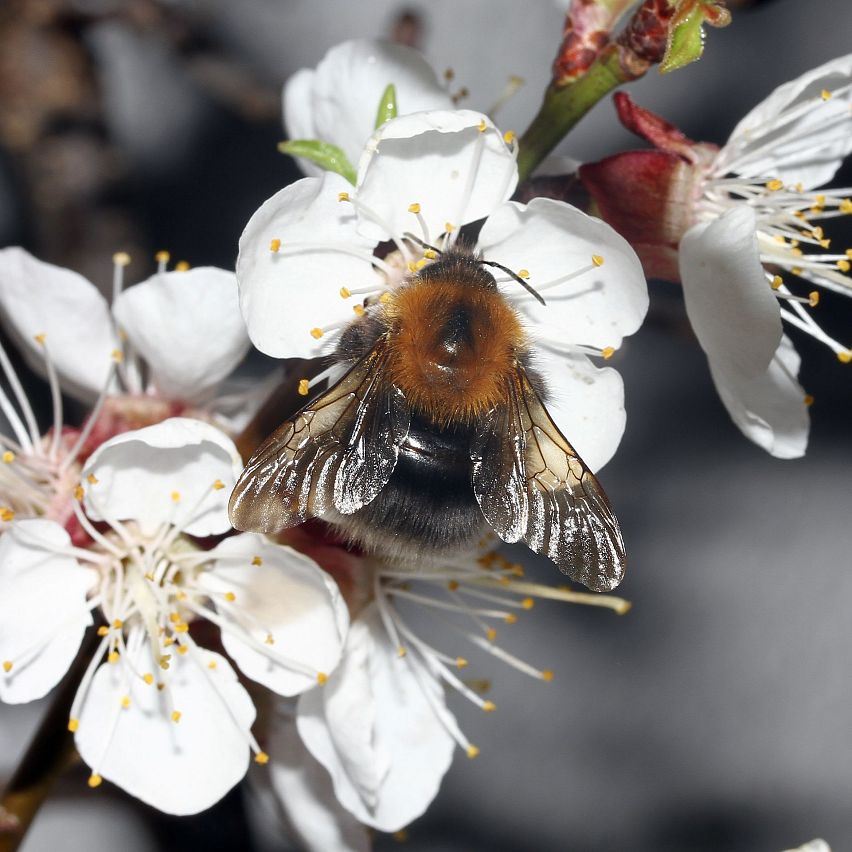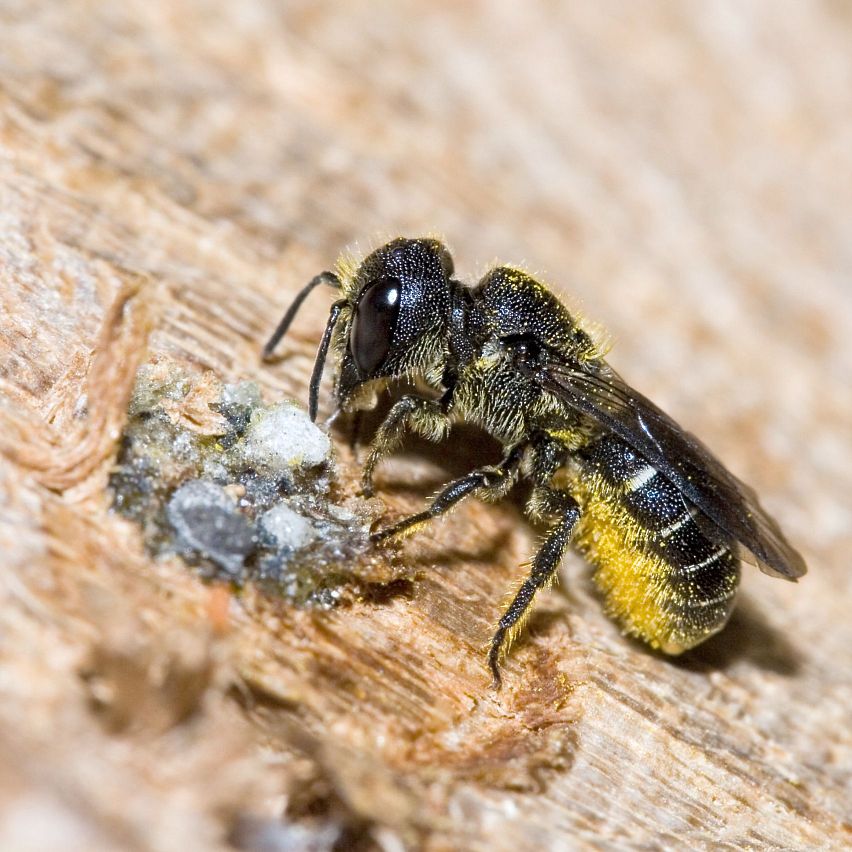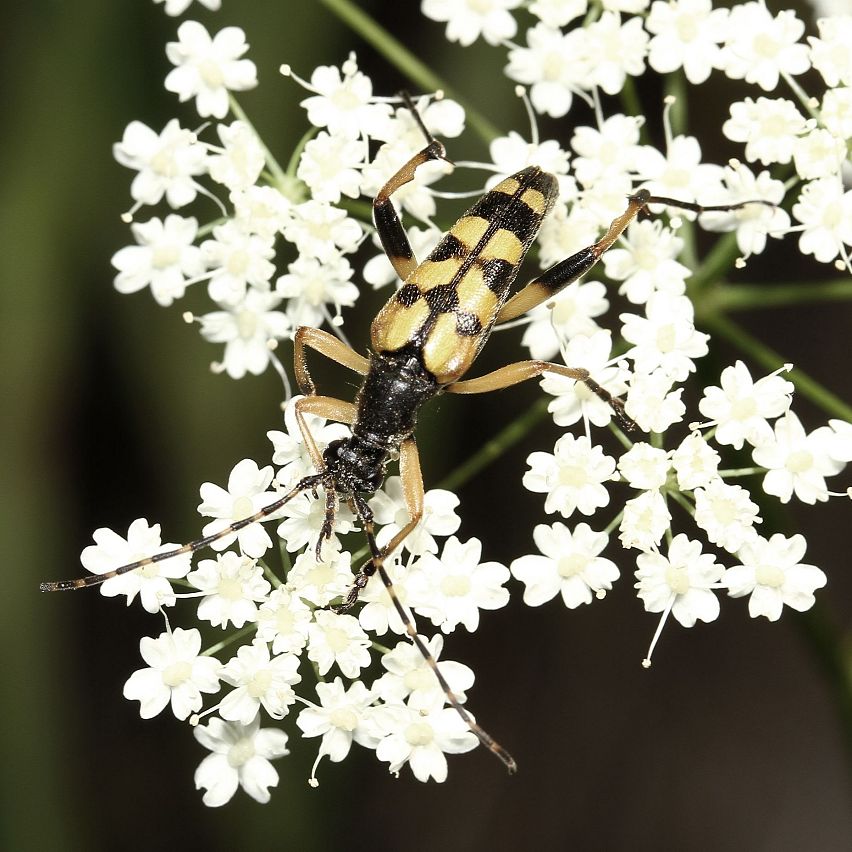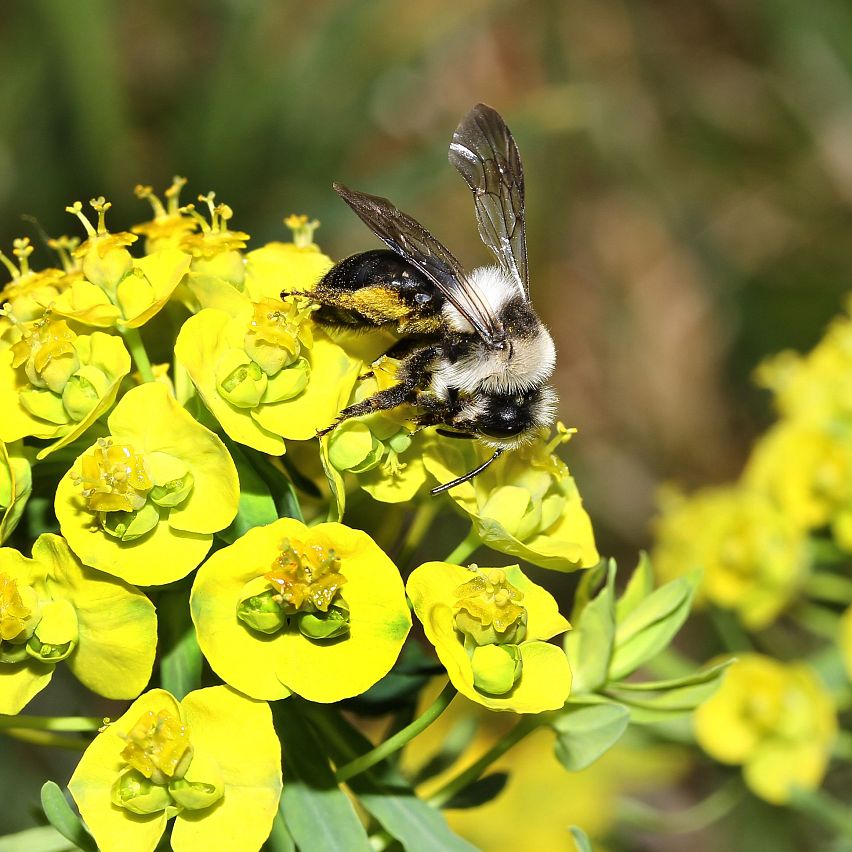Board 6 - At the water
We're in a water conservation area here. A natural spring has been tapped just a few meters away—you can fill up your water bottle with refreshing Tyrolean mountain spring water at the Florianibrunnen fountain! The Alps and our high plateau are rich in such natural springs and wild waters. They are a sought-after habitat for countless animal, plant, and insect species—elsewhere you sometimes have to travel long distances for fresh water.
Yes, you read that correctly: our most important natural treasure, water, must also be consciously protected. Otherwise, human pollutants such as industrial waste, fertilizers, or wastewater will enter the water cycle and poison the environment. Or a large new power station will suck the small streams dry. Ultimately, healthy waters are not only important for (wild) bees, beneficial organisms, and us humans but for all life on earth.
Collect water like a wild bee!
"Fly" to the fountain, take a sip of water and "fly" back to this board.
How many steps do you think you just took for your "water flight"? For clean drinking water, the busy bees often have to fly several hundred meters for each "sip"!
THE SILENT GARDENERS
Solitary Bees
Solitary bees include species such as sand bees, mason bees, and wood bees. They nest in sandy soils, walls, dead wood, and various other locations. This solitary lifestyle sets them apart from bumblebees or the eusocial honeybee.
Bee Riddle
Do you know what these bees and beneficial insects look like?

THE IRRITABLE
Tree Bumblebee
– Bombus hypnorum –
- Features: Furry, somewhat "chubby," with a short head, brown thorax, and abdomen with white hairs at the end. Males are 14 to 16 mm, females are 8 to 18 mm, and queens are 17 to 20 mm in size.
- Habitat: Found in sparse woodland, on forest edges, in gardens, and parks. Nests above ground in old bird nests, crevices in walls and rocks, stables, and attics.
- Lifestyle: "Normal" bumblebees are peaceful—the females only sting when extremely threatened. However, tree bumblebees are very easily irritated, so it is not advisable to look into the nest! Nevertheless, they live very socially, in a summer colony of 80 to 400 bumblebees.
- Observation Tip: Not picky when choosing flowers, particularly like comfrey, lungwort, or viper's bugloss. Important pollinators—fly from as low as 5°C.
- Observation Period: March to August.
Bumblebees are important pollinators; they fly from as low as 5°C.

THE RELIABLE
Common Stinging Bee
– Heriades truncorum –
- Characteristics: 6 mm in size, almost completely black, sparsely hairy, with a genus of abdominal collectors. Found everywhere, up to 1,600 m altitude.
- Habitat: Prefers to live alone (solitary), on forest edges, in orchards, gardens, and settlements.
- Way of Life: Nest tubes are in dead wood (old fence posts, stems, and stalks). Cavities from the previous year are also reused after cleaning. Finished nests are sealed with resin, small stones, or plant fibers.
- Observation Tip: Look for them on composite plants such as elecampane, thistles, ragwort, chamomile, tansy, and yarrow. Also, they can be found in nesting aids.
- Observation Period: June to October.

THE SLENDER
Spotted Narrowbill
– Rutpela maculata –
- Characteristics: 14 to 20 mm long, wings yellow with black dots and horizontal stripes, antennae almost as long as the body and curved backwards.
- Habitat: Open areas in forests, breeding site, and larval development increasingly in deadwood areas.
- Way of Life: Eggs are laid on rotten tree trunks of deciduous trees and shrubs such as birch, oak, or hawthorn. Larvae eat deep tunnels in rotten deciduous wood. After several moults, the larva pupates, and as a freshly hatched beetle, it sets off on its migration outside. Longhorned beetles are gourmets - they feed on nectar and pollen, just like wild bees!
- Observation Tip: Look for them especially on "umbellifers" (e.g., wood angelica or meadow chervil).
- Observation Period: June to August.

THE UNCOMPLICATED
Gray Sand Bee
– Andrena cineraria –
- Characteristics: Mostly black, with only the thoracic area gray with a black transverse band. Females are 15 mm, males are 13 mm, with hairy legs for collecting pollen.
- Habitat: Found in forest edges, sand and gravel pits, as well as inhabited areas such as gardens and parks.
- Way of Life: Not particularly demanding in choosing a nesting site. They live individually (solitary) in self-dug earth nests, often with up to several hundred nests next to each other. Nest entrances on the surface of the ground are closed in the evening as a precaution against impending precipitation or disturbance.
- Observation Tip: Not selective about nesting plants, but likes to feed on dog roses, heather, and dandelions.
- Observation Period: March to May.